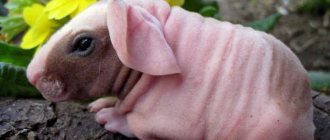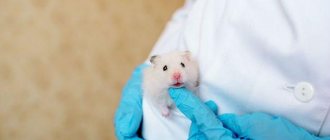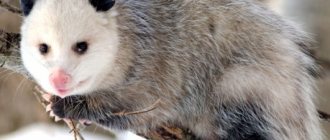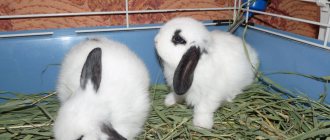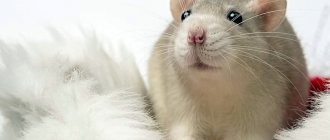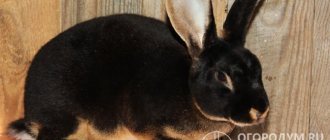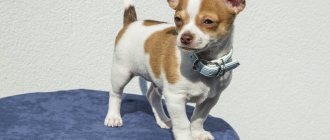Description
The marsupial flying squirrel has a tail and body of approximately the same length - from 15 to 21 centimeters. The animal has short and soft fur, most often ash-colored. The possum's belly is light, and there is a dark stripe on its back.
Externally, the flying squirrel resembles a squirrel, but it is impossible to confuse them, since the possum has a number of features:
- between the front and hind legs on the sides the animal has a membrane that allows it to fly;
- the flying squirrel has large, round and very mobile ears;
- This animal has large dark eyes.
The exotic pet is able to bend its tail and hold small objects with it. And due to its sharp claws and fingers, which have a special structure, it handles food very deftly. Reviews from sugar glider owners often mention how fun it is to watch this animal eat food.
Reproduction
Features of sexual development
Breeding sugar flying squirrels at home is a rather responsible and expensive task. It is difficult to call possum breeding a profitable business. It requires a lot of time (the female takes care of the cubs for more than 4 months) and the presence of an isolated and spacious room.
Many breeders say that females who are expecting or nursing offspring become much less friendly and affectionate. For various reasons (stress, genetic predisposition, early pregnancy, and many others), females can abandon their own cubs or even eat them. Therefore, before deciding to purchase a pair of opposite sexes, you should carefully think through all the nuances of the future keeping of the animals.
Males and females reach puberty at different ages: males starting at 4 months, females at six months. However, parental responsibilities should be assigned to animals no earlier than a year. The mating season usually occurs in June-July. Animals bear offspring 1–2 times a year. For mating, you should not choose individuals that are in a related relationship - this can lead to pathologies in the cubs.
Pairing
Mating occurs within 24 hours after the female starts estrus. She may behave excitedly, make calling sounds, and refuse food. The male looks quite aggressive from the outside: he bites the back of his resisting female friend and even inflicts wounds on her. But for possums this is normal behavior. The wound, if it appears, should be treated to prevent infection. If the future father continues to disturb the female, she needs to be placed in another cage until she recovers completely.
Pregnancy and childbirth
Pregnancy lasts 15 – 16 days. There is no need to remove the male from the cage during pregnancy. He does not interfere with his friend, and after giving birth he also helps her care for her offspring.
Feeling the approach of childbirth, the female carefully licks the pouch on her stomach, and after giving birth, she also licks the path for the offspring - from the genitals to the pouch. The tiny squirrel covers this path on its own in literally 5 minutes.
Despite the fact that there are 4 nipples in the bag, the offspring usually does not exceed 1 - 2 babies. The possum stays in the pouch for about 9 - 10 weeks, without tearing itself away from the mother's nipple - it swells in its mouth, and the baby literally sticks to it.
During the period of feeding “babies”, the female’s diet should be increased - at the rate of plus 50% for each cub.
After some time, the babies move from their mother's pouch to their parents' backs, and then become independent. At the age of 4 months they can already be separated from the female.
About life in nature
In nature, flying squirrels are found in the forests of Australia, preferring eucalyptus trees. They spend almost their entire lives on them. During the day, the animals sleep in their shelters, and at night they are active. Possums feed on insects, small animals, juices and fruits of some plants.
Flying squirrels live in groups of seven. Each group has a dominant male and babies up to a year old. A distinctive feature of the group is its specific smell. It is the male who marks family members and his territory. The smell is considered a kind of sign of belonging; strangers are identified and expelled by its absence.
The energy of flying squirrels depends on the weather and time of year. During rainy and cold seasons, animals become lethargic and may even hibernate. This is caused by a lack of nutrition - this is how possums save vital energy.
Conditions for keeping a sugar glider
Nowadays it is very popular to keep flying squirrels at home. After all, her cute appearance leaves no one indifferent. It should be noted that this animal, like any other animal, has its advantages and disadvantages. Before purchasing, you should study them and only then make a purchase.
According to reviews from sugar glider owners, males mark their territory with a rather bad-smelling substance. Not everyone will like this. You will have to wash the cage and tray very often. It should be understood that a flying squirrel is not a cat or a dog; it cannot be trained to relieve itself in the right place. The animal will definitely do this not only in the cage, but also while walking and in flight. Thereby dirtying furniture, floors, and sometimes the owner himself.
Often in reviews of the sugar glider, the animal’s evening activity is noted. When purchasing an animal, you should be prepared for night noise.
At home, the animal lives longer than in the wild. Of course, the length of life in an apartment depends on proper care and nutrition, but it is still worth keeping in mind that the flying squirrel lives from 9 to 12 years.
Feeding
The most important question that the happy owner of a sugar glider will have to face is what to feed the animal. Proper nutrition is the key not only to health, but, consequently, to a long and happy life. The smell and mood of your pet also depend on this.
In the wild, the sugar squirrel is an omnivore. The main part of its diet consists of fruits and insects. When feeding, you should adhere to the following principles and rules:
- The 70 to 30 rule – 70% of the diet is protein, the remaining 30% is carbohydrates.
- The feeders are filled with food and the drinking bowl with fresh water immediately before the flying squirrels wake up - at approximately 9 - 10 pm. In the morning, you need to clean the feeders and leave the water. If a possum has access to food 24 hours a day, it will suffer from obesity. Representatives of this subspecies are able to wake up in the daytime and sleepily drag a treat into the nest, falling asleep on the move, often with an unchewed piece of food in their paws. The maximum that can be left for the possum during the day is a piece of fruit or dried fruit, as well as a little juice diluted with water.
- If your pet doesn't drink for a long time, don't be alarmed. Sugar squirrels can get enough moisture from fruits. Despite this, water in the drinking bowl must be constantly present in the cage. It is better to use filtered or bottled water and change it at least once a day to prevent harmful bacteria from growing in it.
- Foods from the human table are prohibited for feeding: fatty, spicy, fried, salted, sausages, etc. The maximum that can be allowed is chicken or turkey meat, cooked without salt and spices.
- Sweets (honey, fruits) can be given to the animal in limited quantities - as a treat, to support the female during pregnancy and feeding the cubs.
- The food should contain as much calcium as possible (the domestic sugar glider is very sensitive to its deficiency) and as little phosphorus as possible.
- All vegetables and fruits should be cut into fairly large pieces that will be easy for the squirrels to pick up in their paws. The animal will not like small pieces.
Products necessary for the normal development of the dwarf flying squirrel:
Protein
- Insects – you can feed your pet live grasshoppers, fly larvae, crickets, mealworms and zoophobas (Latin worms, a favorite delicacy of the sugar glider). The daily norm for an adult older than six months is 2–3 zoophobass per day, 5–8 mealworms or 1–2 large banana crickets. All of these insects can be purchased at a pet store. Many sugar glider breeders breed gliders in plastic containers with sawdust. They eat cucumbers, apples and cereals. They can live up to 3 months. You can also feed the possum no more than once a week with one-day-old chicks or other small chicks.
- Meat - about 30 grams per day per individual, boiled without salt and spices, lean (chicken or turkey).
- Fermented milk products - no more than 2 times a week: natural low-fat cottage cheese, kefir, yogurt, fermented baked milk, children's curds and yoghurts without preservatives and additives, including sugar-free.
- Quail eggs without shell - no more than once every 7-10 days.
- Baby food – puree for first feeding, possibly with meat.
- Porridge - once every 7 - 10 days, they must be cooked exclusively in water, since milk is extremely harmful for flying squirrels. The healthiest ones are oatmeal and buckwheat, you can add fruits, dried fruits, candied fruits, honey (literally a drop per serving).
Carbohydrates
- Whole fruits and vegetables are the main source of carbohydrates. A possum needs about 35–40 grams of fresh, unprocessed fruits and vegetables of various types per day. These can be peaches, oranges (if the possum is older than six months), kiwis, apples, pineapples, bananas, avocados, watermelon, melon, cucumbers, tomatoes, sweet potatoes, mangoes, papaya, carrots. Products with a laxative effect (beets, pears, plums) should not be offered to your pet.
- Juices and fruit purees – up to 20 ml per day. It is advisable to give the animal freshly squeezed juices diluted 1:1 with water, or juices and purees intended for children under 3 years of age, without preservatives and sugar.
- Any dried fruits, except prunes - 1 - 2 pieces per day (cherries, pineapple, dried apricots, etc.).
Treats
- Nuts – 2 small or 1 large nut per week (peanuts, hazelnuts, pine).
- Honey - only as an additive to the main food, about 1.5 teaspoons per week.
- Drops – no more than one per day.
Vitamins and minerals
Regular intake of calcium and multivitamins is recommended. Usually they are crushed into powder, rolled into insects and fed to pets. Some breeders dissolve the powders in sweet fruit juice or puree. The exact dosage must be selected based on the weight of the animal and the instructions on the package. You can purchase these supplements from online stores specializing in exotic animals or from veterinary pharmacies.
Where to keep a sugar glider
Keeping a flying squirrel in an apartment requires a lot of free space, as animals love to fly. The cage should also be spacious. There are special requirements for it:
- rods with PVC coating, the distance between which should be from 10 to 13 mm;
- reliable lock;
- drinking bowl;
- small feeders for different types of food;
- climbing equipment;
- scratching post;
- a house with an opening in which the flying squirrel will hide during the day;
- various attractions (wheel, etc.);
- Soft material is placed on the pallet in which the animal will not get entangled.
The cage and its contents must be made of safe material so that the animal does not get poisoned if it starts to chew something.
Cell
For one individual you will need a cage with a tray, an aviary, a terrarium or a display case with dimensions of 50-50-80 cm, for two 140-50-80 cm. It is better to provide the largest possible conditions. If a cage is used as a container, the bars should not be narrower than 1 cm.
Reference cell
What should be in the cage
Be sure to have a drinking bowl and several feeders. It is important that the squirrel is habituated, otherwise it may die of thirst. Small metal or ceramic feeders are required.
Inside the cage you need climbing structures, a house, branches, pipes, etc.
What shouldn't happen
There should be no materials inside the cage that could poison the animal. Curiosity and constant contact can cause a squirrel to try something, which can affect its health.
How to care for a flying squirrel
Judging by the reviews about the sugar glider, caring for it at home is not as scary as it might seem at first glance:
- Once every 3-4 days it is necessary to wash the cage;
- constantly provide the animal with the opportunity for communication and movement;
- when walking, remove traumatic and breakable objects from the room;
- when walking, it is worth covering mirrors and glass with curtains or fabric so that he does not crash into them;
- there is no need to bathe or comb the animal;
- The animal does not need vaccinations;
- If the animal does not grind its claws down on its own, they must be trimmed.
Diseases
Possums suffer from a fair number of ailments that affect their lifespan. Most often they are affected by metabolic bone disease associated with injury and poor nutrition. Possible diarrhea from overloading the stomach with fruit or due to parasites. Any treatment is carried out under the supervision of a veterinarian.
Irina Ivanishchena
I am engaged in professional breeding of hamsters and rats on an ongoing basis. I know something about them that most people don’t know. Always open to constructive discussion
Post Views: 2,578
What to feed your sugar glider
Reviews from sugar glider owners indicate that the main rule for a healthy diet for a flying squirrel is the exact ratio of proteins and carbohydrates: a ratio of 7 to 3. Water should always be present in the animal’s drinking bowl. Food should be given only while the animal is awake; it must be removed in the morning. Having food during the day can make your pet fat.
The possum's diet consists of fruits and insects. Sometimes you can give honey, plain yogurt and poultry without spices. Feeding what is on people's tables is strictly prohibited! Also, you should not give the animal grapes and a lot of nuts.
Care
Proper care will ensure a happy life and comfortable conditions for the possum. If you don't follow the rules, the animal will become depressed and aggressive.
Feeding
Health, and therefore the length of life and the mood of the animal, depend on proper nutrition. Diet affects smell and even aggressiveness.
Daily diet
The following rules will help you create a feeding plan:
- Fruits are the most important component in the flying squirrel’s diet; they should be about 70% of the total diet;
- The remaining 30% are protein components;
- It is recommended to minimize phosphorus concentrations and provide more calcium;
- Watch out for sweets - it should be a delicacy, not an everyday occurrence;
- It is allowed to diversify the food with meat (boiled turkey or chicken);
- Live food (insects) is also needed;
- Once every few days the possum is given honey - this affects its metabolism.
What is possible
Fruits and vegetables are cut into large pieces - this makes it easier to take the paws. The squirrel doesn't like small pieces.
Insects:
- Worms;
- Zoophobas;
- Banana crickets.
Dairy products:
- Cottage cheese;
- Kefir;
- Yogurt.
You can also give baby food, cereals and meat (chicken, turkey). These are all sources of protein. The diet should also contain carbohydrates - these are fruits (dried, pureed, etc.).
Nuts, honey, and drops are suitable as treats.
What not to do
Human and too fatty food is not suitable for the possum. More specifically, it is prohibited to give:
- Bird food;
- Grapes and raisins;
- Lettuce, cheese;
- Excessive amounts of nuts.
Housing
You need to understand whether you plan to buy one or two animals at once. If the owner does not have time to deal with the squirrel for several hours every day, then it is better to choose the second option. More often, possums of different sexes are purchased to form a pair.
The housing should be located in a slightly dark place, away from the bedroom - this will help to avoid sounds at night. The cage also needs to be protected from drafts, heat sources, direct rays of the sun, plants, furniture - everything that the squirrel can reach. Content temperature is from 20 to 30 degrees Celsius. The tray should contain wood filler to absorb the smell.
Fur and claw care
Although the flying squirrel is unclean, they take a little care of themselves - like cats, they lick themselves, cleaning their fur with their claws and tongue, so the owner does not have to painstakingly care for the fur.
Swimming is not permitted. The squirrel is not afraid of water, but is not adapted to swimming and, without proper supervision, can drown even in a small basin or jar. If it happens that the baby gets very dirty with something, you need to carefully wipe him with a damp cloth or cotton towel soaked in boiled water. After completing the procedure, the animal must be dried completely and avoid being in a cool room or in a draft.
Sometimes owners leave a sand bath in the cage for bathing - but this is not necessary. Squirrels don't even climb there.
The animal sharpens its claws on its own - on imitation wooden branches that should be in the cage. If for some reason they have grown too much, they will still have to be cut off using a nail clipper (like for cats or dogs).
Breeding
Breeding possums is far from the most profitable and easy business. There are a number of good reasons for this:
- To maintain a pair, decent conditions are required (food, care, cage);
- a pregnant female requires additional food costs;
- finding future owners is not an easy task;
- veterinary care is very expensive;
- the character of pets engaged in raising offspring changes for the worse in relation to humans;
- Caring for a couple requires isolated space and a lot of time.

